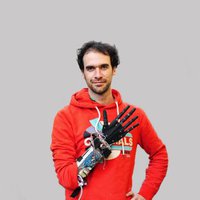Computer & electronics hardware
Yunji Chen
Improvements in artificial intelligence call out for new hardware.

Global
Yevgen Borodin
A software tool conceived for blind people could offer an intuitive way for anyone to listen to online material.

Global
Adam Coates
Artificial intelligence could make the Internet more useful to the millions of people coming online for the first time.

Europe
Nicolas Huchet
A bionic hand printed in 3D

Europe
Séverin Marcombes
Designed a local, cross-platform and secure storage solution for multiple devices
